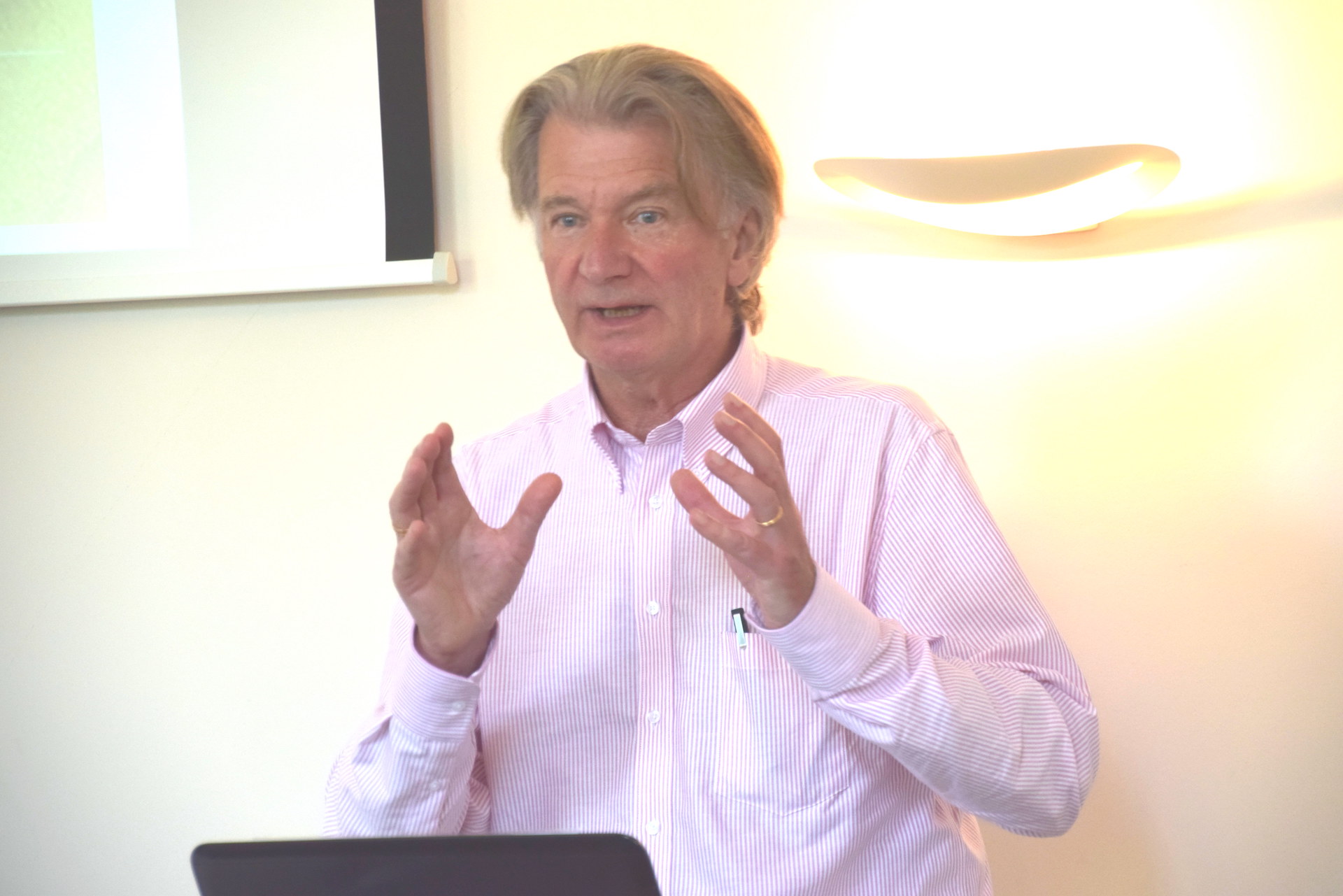This article was written by Anders Wijkman for the Global Challenges Foundation. Listen to the Transformers episode with Anders here.
Welcome to the world of the Circular Economy – an emergent way of looking at the economy. The backdrop is the rapidly increasing throughput of energy and materials, not least the growing use of disposable products, and the threat it constitutes to planet Earth. The International Resource Panel (IRP)[1] is estimating that the extraction and processing of materials, fuels and food make up more than half of global carbon emissions and 90% of the loss of biodiversity. To continue business as usual would endanger planetary life-support systems, whether referring to climate change, ecosystem decline or resource depletion.
By moving from linear to circular production models the pressure on natural systems would lessen considerably. Nothing is 100% circular, however. All materials degrade and disperse over time and with use. What’s more, collecting end-of-life products and materials and restoring them to a re-usable state itself requires energy inputs and new materials. Obviously, the circular economy is no panacea. Still, a lot of studies confirm that there are huge gains to be made – economically, socially and environmentally – by moving from linear to circular material flows and by keeping products and materials in use as long as possible.
A move from a linear to a circular production model represents an economy-wide transformation. All major stakeholders have to be committed and engaged – national governments, cities, the business community, researchers as well as consumers. The international dimension is crucial. International and global governance that facilitates the transition to a circular economy is very much needed.
Even if a Circular Economy appears obvious it will not happen by itself. The barriers to change are plentiful. Policy frameworks have to be reconsidered at international, regional, national and city levels. Business models, consumer preferences and lifestyles have to be changed. There are, indeed, a number of reasons why the” take-make-dispose” model continues to dominate the economy. The most important ones are:
- During much of history natural resources were perceived as both abundant and cheap; likewise, the capacity of nature to absorb waste and residues was perceived as infinitely large.
- Producers have rarely paid the full costs of production; the use of nature has been more or less free of cost – resulting in a huge market failure.
- Many products include toxic substances and hence are difficult to reuse or recycle.
- Modern products are composed of a variety of materials, which are both difficult to decompose and reuse and recycle.
- Supply chains are global in nature which make it difficult to close the loops; moreover, trade agreements are free from references to circularity.
- Most business models have favored high material throughput and short product lives.
- Consumer patterns were developed without considering sustainability.
- We measure the wrong things; GDP growth is a useless metrics when it comes to everything that is connected to qualitative development.
To overcome all these barriers, a number of things have to happen – both in politics, business and with regard to consumer preferences. At the top of the list will be policy initiatives – at global, regional, national and city levels – to correct for market failures and provide the necessary incentives to move the economy in the right direction.
Rethink Economic Policy Frameworks
When examining the hurdles on the road to a circular economy, most are closely related to shortcomings and failures in policy frameworks, not least the flawed incentives structure of the economy. This can only be addressed by policy change. Ideally at the international level. Recent initiatives in the EU – through the European Green Deal and the Circular Economy Action Plan – demonstrate that European markets are likely to undergo major changes with regard to resource efficiency and circularity in the near future. Policy measures at EU level will then have to be complemented at the level of Member States. Crucially important, as well, will be for the EU and it´s Member-States to prepare for follow-up initiatives at the level of UN, WTO, OECD, G 7 and G 20 to make sure that the transformation to a CE will be compatible with rules-making at the international level.
Regarding policy change the most important measures ought to be:
- Initiate a tax shift – lowering taxes on labor and increasing taxes on resource use.
- Stop subsidizing fossil fuels production and consumption.
- Products should be designed for reuse, refurbishment, remanufacturing and recycling.
- Remove VAT on all reused materials. This would give a boost to reuse and recycling.
- Use Public Procurement proactively in the advancement of the circular economy.
- Make material efficiency a priority in climate mitigation strategies.
- Give cities greater authority in decision-making on circularity.
- Complement today’s flow-based metrics, such as GDP, with measures of a country’s stock of assets to account for the restoration and regeneration of natural capital.
The European Green Deal will significantly change the business environment. The Circular Economy Action Plan will aim at an economy-wide transition which gets to the heart of industrial production – from design to manufacturing to consumption, repair, reuse, recycling and bringing resources back into the economy. This is in stark contrast to today´s linear production model. There is only one possible conclusion to be drawn from this: production and business models must change. Disruption is inevitable. Businesses that do not adapt to the principles of circularity will have a difficult future.
Given the urgency with regard to climate change and ecosystem decline, a natural question emerges: Where to start? The answer is quite simple. Any attempt to promote circularity in all its aspects should give priority to areas in the economy where energy and material throughput is particularly large, such as: Energy, Construction and Building, Batteries and Vehicles, Electronics, Textiles, Plastics, Packaging and Food.
In conclusion
The move towards a circular economy seems unstoppable. While nothing is fully circular, the benefits of moving from a Linear to a Circular Production Model are obvious both from purely economic as well as environmental and social points of view. Of crucial importance in the years ahead will be the policies enacted at global, EU, national government and city levels. The linear production model is dominating today because of massive market failures – the negative externalities in relation to both the extraction, production and use of all kinds of natural resources are not reflected in market prices. Business models are built upon high throughput of energy and materials. There is a strong need for more explicit and focused intergovernmental discussions about governance. Key issues will be how to align global supply chains with the objectives of a circular economy.
What will be needed urgently, as well, is a value shift – replacing, or at least complementing, material consumption as the main objective in life. Quality of Life has many components, such as a purposeful life, health care, healthy ecosystems and a stable climate, personal safety, conditions in the workplace, education, access to and participation in cultural activities and family life. It is abundantly clear from a lot of research that the priority given in contemporary society to material consumption is exaggerated, both from the point of view of nature protection and wellbeing and happiness for the individual.
Anders Wijkman

